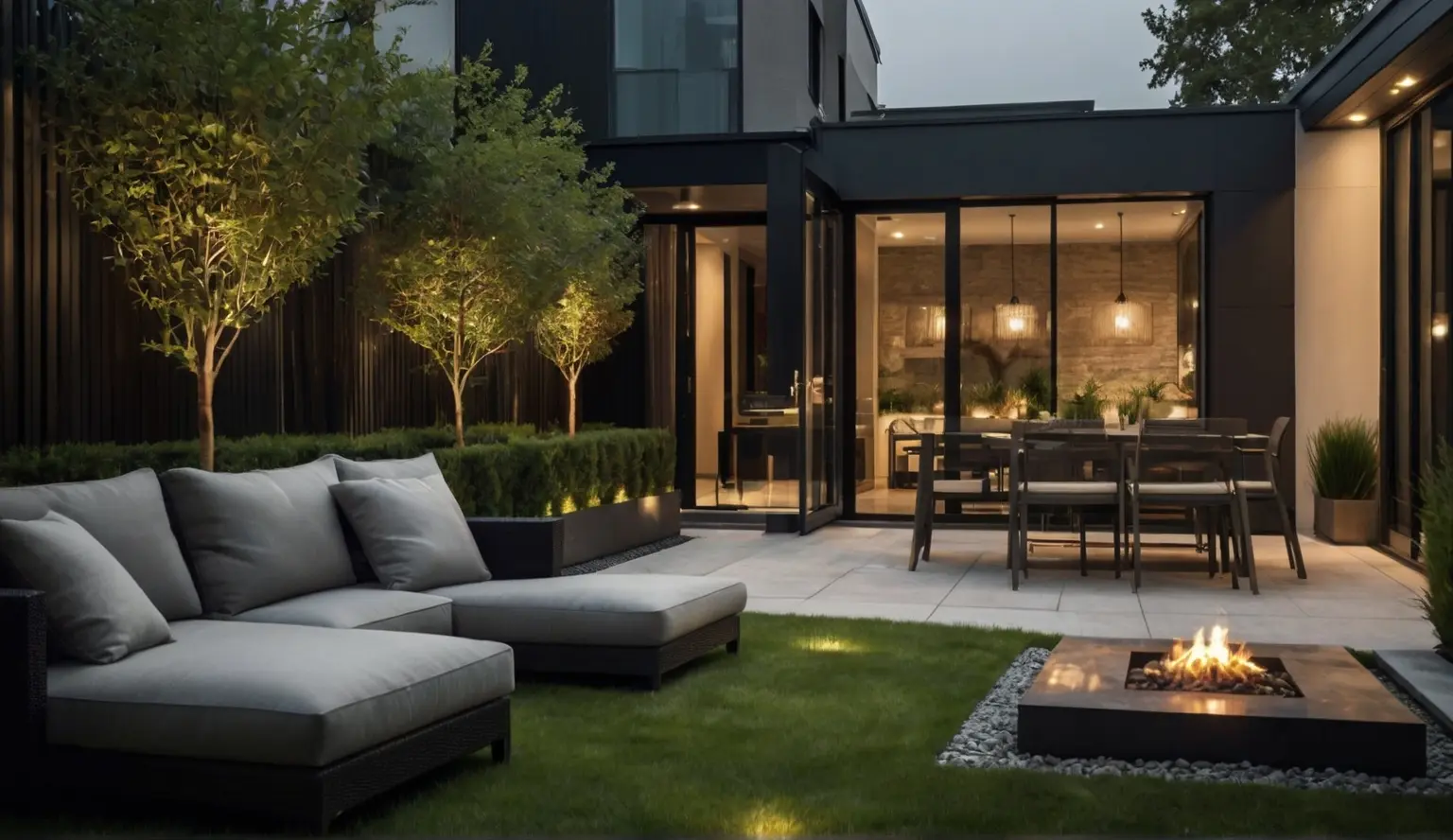Introduction & Key Principles of Timeless Home Design
Introduction
In 2025, the idea of “timeless design” has never been more relevant. As home decor trends cycle faster than ever, many homeowners find themselves caught in a loop—constantly updating their spaces to stay current, only to feel dissatisfied within months. The real challenge lies in creating a home environment that not only reflects your style but also endures changing fashions, lifestyle shifts, and the wear of time.
Why Does Timeless Design Matter?
Timeless design is about more than just aesthetics; it’s an investment in your home’s future. A well-designed space holds its value, saves you money on frequent renovations, and creates a comforting sanctuary you’ll love for decades. In essence, timeless design offers stability in an ever-changing world.
Consider some of the most beloved interiors you’ve seen—those that exude warmth, balance, and elegance without feeling outdated. These homes often share a commitment to quality materials, thoughtful layouts, and classic color palettes that adapt effortlessly to new accessories or evolving tastes.
This article explores how you can cultivate such a space. From foundational design principles to practical tips and budgeting insights, you’ll gain a comprehensive understanding of what it takes to create a timeless home design that truly lasts.
Emphasis on Quality Over Quantity
One of the most fundamental principles of timeless design is prioritizing quality over quantity. In a culture that encourages accumulation and quick consumption, shifting your mindset to value durability and craftsmanship is crucial.
Why Quality Matters
High-quality furniture and finishes not only look better but age gracefully, gaining character over time. Cheap or mass-produced items, in contrast, often degrade quickly—fading, warping, or breaking, which forces costly replacements and disrupts the harmony of your decor.
Expert Insight:
Interior designer Jessica Wright says, “Investing in well-crafted pieces is the cornerstone of timeless design. Quality transcends trends and tells a story about your home’s history.”
How to Identify Quality
-
Materials: Solid hardwoods, natural stone, genuine leather, and metals like brass or wrought iron indicate quality.
-
Construction: Joinery (like dovetail joints in drawers), sturdy frames, and smooth finishes are key.
-
Brands and Artisans: Research brands with reputations for longevity and consider custom or artisan-made pieces for uniqueness and durability.
Practical Tip:
Instead of filling your home with many inexpensive items, select fewer but standout pieces that serve multiple purposes and withstand wear.
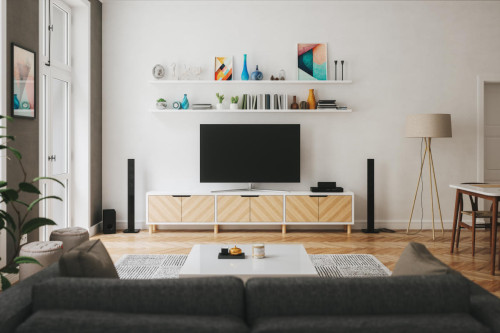
Modern-House-Design-Tips-How-to-Create-a-Timeless-Home__
Neutral Color Palettes and Classic Tones
Color dramatically shapes the perception of space, and in timeless design, neutral palettes reign supreme. These colors create a serene backdrop that allows your furnishings, art, and architectural details to shine.
Why Neutrals Work
Neutral shades—such as off-white, taupe, soft gray, and warm beige—offer versatility. They blend with most accent colors and materials and create spaces that feel open, calm, and sophisticated.
Color Psychology:
Neutral tones evoke feelings of relaxation and stability, making your home feel like a refuge. They also adapt well to lighting changes and different seasons, maintaining visual interest year-round.
Case Study:
A New York loft redesigned with a warm gray palette maintained its fresh, modern vibe for over a decade, requiring only minor accessory swaps to stay current.
Tips for Using Neutrals Effectively
-
Layer various neutral shades to avoid flatness. For example, pair cream walls with a beige sofa and gray accents.
-
Add warmth with wood tones or metallic finishes.
-
Use neutrals as a canvas and bring in color through textiles, plants, or art.
Balance Between Functionality and Aesthetics
A timeless home is not just beautiful; it works perfectly for the people living in it. The balance between function and form ensures that your space feels lived-in yet polished.
Why Functionality Is Essential
A gorgeous room that’s uncomfortable or impractical will lose its appeal quickly. Timeless design embraces practicality without compromising on style.
Design Strategies:
-
Prioritize furniture that fits your lifestyle, like a comfortable sofa sized to your living room or a dining table that accommodates your family and guests.
-
Consider traffic flow to avoid cramped or awkward spaces.
-
Incorporate smart storage solutions that keep clutter hidden and maintain calm.
Pro Tip:
Choose pieces with clean lines and adaptable forms. For example, ottomans that double as storage or modular sofas you can rearrange.
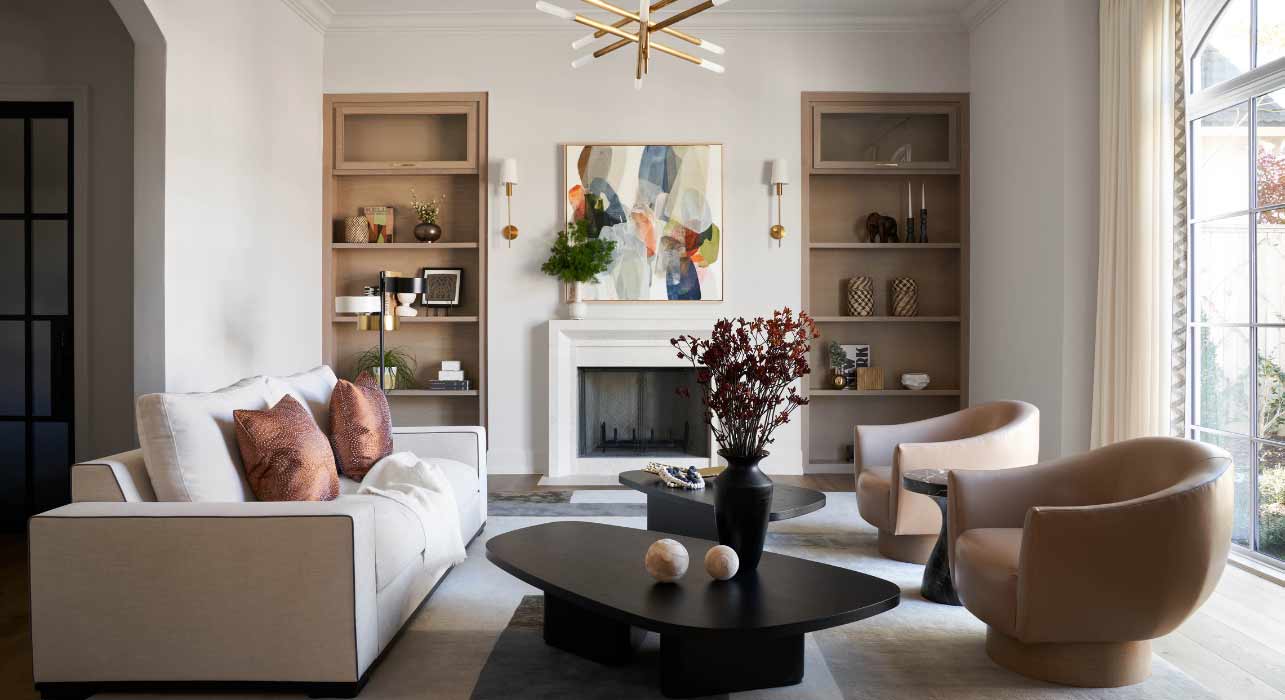
Modern-House-Design-Tips-How-to-Create-a-Timeless-Home__
Use of Natural Materials
Natural materials connect us with the earth, providing texture, warmth, and authenticity. In timeless design, they play a starring role.
Why Nature-Inspired Materials?
They age beautifully and create a tactile richness that synthetic materials often lack. Plus, they enhance air quality and sustainability.
Popular Materials:
-
Wood: From floors to furniture, wood’s grains and tones add depth. Opt for solid hardwoods like oak, maple, or walnut.
-
Stone: Marble, granite, and limestone make elegant countertops, flooring, and accents.
-
Metal: Brass, bronze, and wrought iron add timeless shine and durability.
-
Leather and Natural Fabrics: Leather chairs and linen curtains bring softness and durability.
Example:
A Scandinavian-inspired home uses wide-plank oak flooring, a stone fireplace, and leather armchairs, combining warmth and sophistication that lasts.
Thoughtful Layering of Textures and Patterns
Texture and pattern enrich your decor and prevent neutral or classic spaces from feeling sterile.
Why Texture Matters
Layering different textures—smooth, rough, soft, shiny—adds visual interest and tactile appeal.
How to Layer Like a Pro
-
Combine soft textiles (wool rugs, linen pillows) with harder surfaces (wood tables, metal fixtures).
-
Use subtle patterns such as herringbone floors, tweed cushions, or striped drapes.
-
Avoid bold, trendy patterns; opt for classic motifs like stripes, plaids, or florals in muted tones.
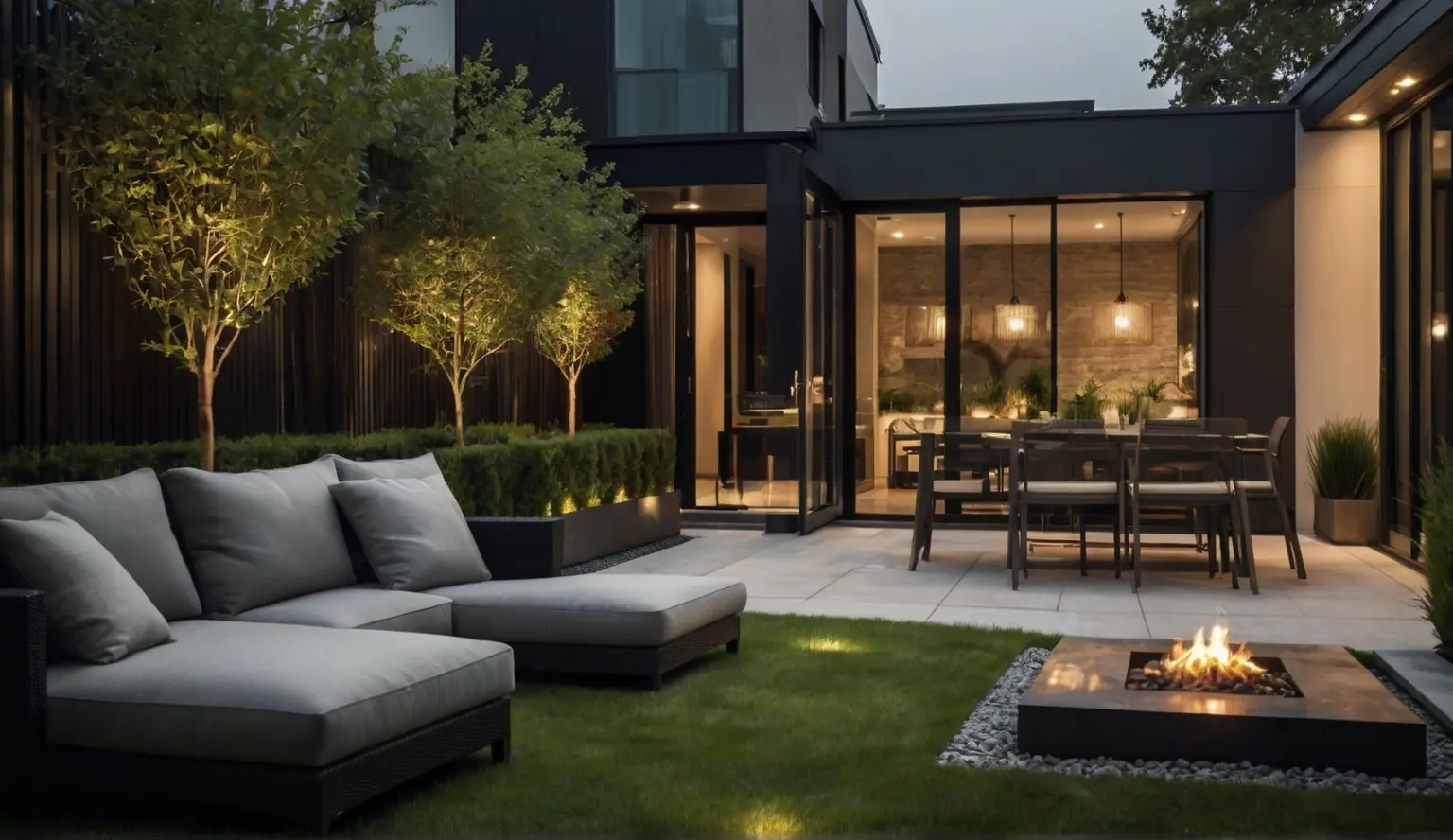
Transform Your Yard & Patio: Design, Maintenance, and Cost Guide for 2025
Avoiding Overly Trendy Elements
Trends can inspire, but overusing them risks dating your home rapidly.
How to Stay Timeless and Fresh
-
Use trendy pieces sparingly as accents (throw pillows, artwork, vases).
-
Keep large investments classic and simple.
-
Refresh your space seasonally with small updates rather than full redesigns.
Summary of Key Principles
| Principle | Why It Matters | Pro Tip |
|---|---|---|
| Quality Over Quantity | Durability and timeless appeal | Invest in well-made staple pieces |
| Neutral Color Palettes | Versatility and calm | Layer different neutrals for depth |
| Functionality & Aesthetics | Comfort with style | Choose adaptable, comfortable furniture |
| Use of Natural Materials | Authenticity and durability | Mix wood, stone, metal for texture |
| Layering Textures & Patterns | Visual & tactile interest | Stick to classic patterns & muted tones |
| Avoid Overly Trendy Elements | Longevity without feeling outdated | Update with accessories, not large items |
Practical Strategies for Timeless Design & Budgeting Your Project
Introduction to Practical Design Strategies
Having explored the core principles of timeless home design, the next crucial step is applying these principles in your own home. Creating a space that stands the test of time requires thoughtful planning, smart sourcing, and strategic investments.
In this section, we’ll cover how to:
-
Choose furniture and decor with longevity in mind
-
Incorporate architectural details that elevate your space
-
Blend functionality with classic style
-
Plan your budget realistically using a detailed cost table
-
Avoid common pitfalls that undermine timelessness
Selecting Furniture and Decor That Endures
Timeless design starts with foundational pieces—furniture that not only looks good but can last decades.
How to Choose Timeless Furniture
-
Opt for Classic Silhouettes: Pieces with clean lines and balanced proportions never go out of style. Think of Chesterfield sofas, mid-century modern chairs, or traditional wingback armchairs.
-
Invest in Durable Materials: Solid wood frames, quality upholstery (like leather or natural fibers), and sturdy hardware extend your furniture’s life.
-
Neutral Upholstery: Choose fabrics in neutral tones with subtle textures for maximum versatility. These can be brightened with seasonal throws and pillows.
-
Versatile Pieces: Select furniture that adapts to various uses, such as ottomans with storage, extendable dining tables, or sleeper sofas for guests.
Decor Elements to Keep or Replace
-
Stick with neutral or metallic finishes for lamps, picture frames, and other accents.
-
Choose classic patterns for rugs and curtains—persian rugs, sisal, or subtle stripes.
-
Rotate accent pieces like cushions or vases seasonally to refresh your space without major overhauls.
Incorporating Architectural Details
Architectural elements can profoundly influence your home’s timeless appeal.
Molding and Trim
-
Crown molding and baseboards: These add sophistication and frame your rooms beautifully. Stick to simple, elegant profiles rather than intricate, outdated styles.
-
Wainscoting or shiplap: Adds texture and interest while remaining classic.
Doors and Windows
-
Use wood or wood-look frames for warmth and durability.
-
Choose traditional window grids or mullions for character.
-
Consider installing classic hardware finishes like brass or matte black.
Built-ins and Shelving
-
Custom built-in bookshelves or cabinetry add storage and charm.
-
Floating shelves can highlight personal items and keep spaces uncluttered.
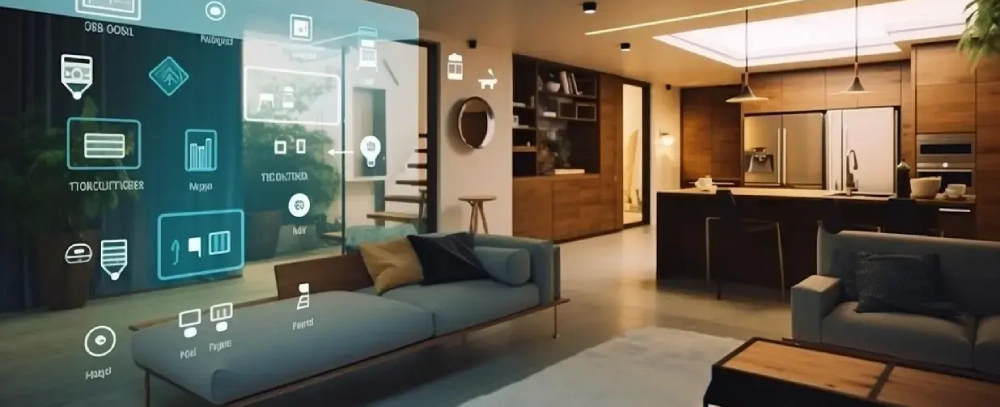
Smart-Home-2025
Blending Functionality with Classic Style
Functionality ensures that your home remains livable as well as lovely.
-
Zoning: Define spaces by function (reading nook, dining area, work corner) to improve flow.
-
Storage: Concealed and elegant storage solutions help maintain order and calm.
-
Lighting: Use layered lighting—ambient, task, and accent—to create mood and practicality. Classic fixtures like lantern pendants or simple chandeliers suit most timeless interiors.
-
Sustainability: Energy-efficient appliances and materials that require minimal upkeep fit well with timeless design philosophy.
Budgeting Your Timeless Home Design: Cost Table Overview
Budget planning is key to achieving a timeless home without overspending. Below is a practical cost table estimating typical expenses for key items and features in different budget ranges.
| Item / Feature | Low-End Cost | Mid-Range Cost | High-End Cost |
|---|---|---|---|
| Sofa (quality upholstery) | $500 – $900 | $1,000 – $2,500 | $3,000 – $6,000+ |
| Dining Table (solid wood) | $700 – $1,200 | $1,500 – $3,000 | $4,000 – $10,000+ |
| Area Rug (classic patterns) | $150 – $400 | $500 – $1,200 | $2,000 – $5,000+ |
| Lighting Fixtures | $100 – $300 | $400 – $900 | $1,000 – $3,000+ |
| Window Treatments (per window) | $150 – $300 | $400 – $800 | $1,000 – $2,500+ |
| Wall Paint (per room) | $150 – $400 | $500 – $1,000 | $1,200 – $3,000+ |
| Flooring (per sq. ft.) | $3 – $6 | $7 – $12 | $15 – $30+ |
| Built-in Shelving | $800 – $1,500 | $2,000 – $4,000 | $5,000 – $12,000+ |
| Accent Chairs | $200 – $600 | $700 – $1,200 | $2,000 – $5,000+ |
| Decor Accessories | $100 – $300 | $400 – $900 | $1,000 – $3,000+ |
How to Use the Cost Table Wisely
-
Start with Priorities: Identify which items are most critical for longevity and comfort (e.g., sofa, dining table). Allocate a larger share of your budget here.
-
Mix Price Points: It’s okay to mix high-end staple pieces with more affordable accents. For example, a high-quality sofa paired with budget-friendly lamps or rugs.
-
Plan for Installation and Labor: Don’t forget to include costs for professional installation, painting, or custom work. This can add 10-20% to your overall budget.
-
Allow for Contingencies: Set aside 10-15% extra for unexpected expenses or upgrades during the project.
Avoiding Common Pitfalls
Even the best intentions can falter if you fall into these traps:
-
Chasing Every Trend: Avoid over-investing in trendy styles or colors that will date quickly.
-
Ignoring Scale and Proportion: Oversized furniture or too many small pieces disrupt balance and comfort.
-
Neglecting Maintenance: Choose materials that are not only beautiful but also easy to clean and maintain.
-
Underestimating Lighting: Poor lighting can ruin even the most beautiful design. Invest in quality fixtures and layering.
-
Forgetting Lifestyle Needs: A timeless home must fit your daily routine—consider children, pets, or entertaining when selecting materials and layouts.
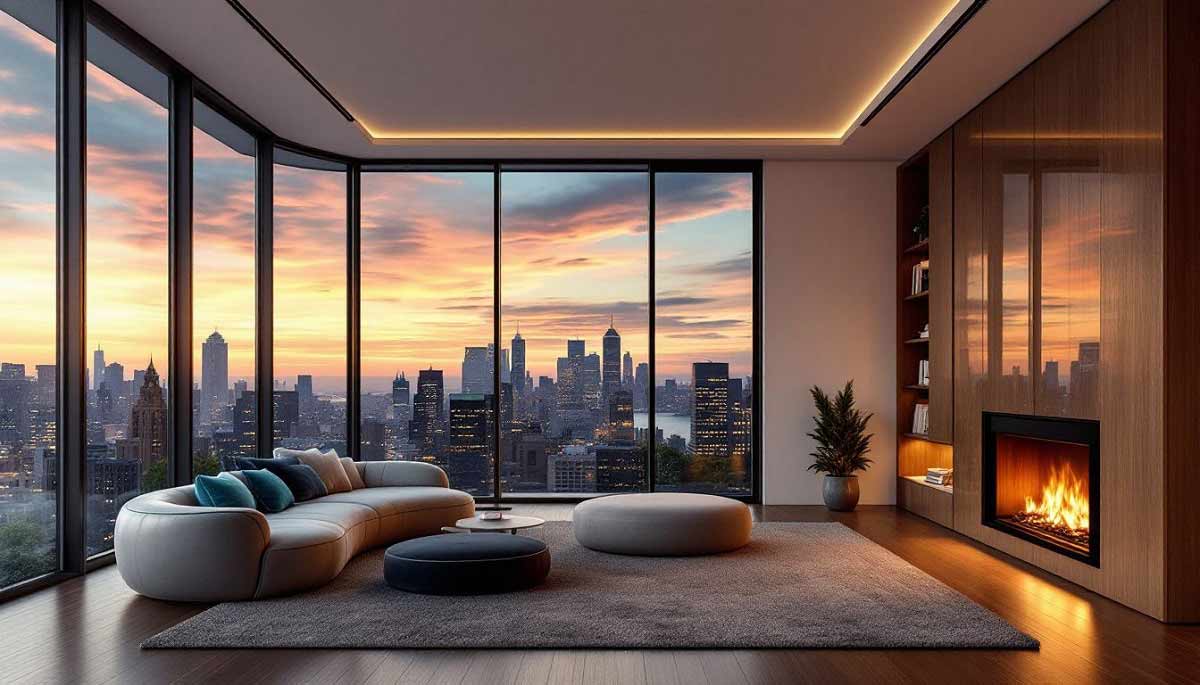
house in new york usa
Case Study: Budget-Friendly Timeless Living Room Refresh
Client: A family of four in a suburban home wanted to refresh their living room without a full remodel.
Budget: Mid-range ($7,000 total)
Strategy:
-
Invested $2,200 in a durable, neutral-toned sectional sofa with removable, washable covers.
-
Chose a $1,000 solid oak coffee table with simple lines.
-
Added $500 for a Persian-style area rug in soft hues.
-
Upgraded lighting with a $700 classic brass chandelier and $300 matching lamps.
-
Freshly painted walls in a warm gray ($600).
-
Accessorized with budget-friendly pillows and throws ($400).
-
Installed simple but elegant window treatments ($1,000).
Outcome:
A cohesive, comfortable living room with classic appeal that remains stylish after two years.
Pro Tips for Stretching Your Budget
-
Buy Second-Hand or Vintage: Many timeless pieces can be found at consignment shops or auctions, often at a fraction of retail.
-
DIY Minor Updates: Painting furniture or sewing your own curtains adds a personal touch while saving money.
-
Layer Accessories Gradually: Build your decor collection over time, focusing on quality.
-
Focus on Key Rooms First: Prioritize spaces you use most frequently (living room, kitchen) for your biggest investments.
Maintenance, Seasonal Updates & FAQs for Long-Lasting Style
Maintaining Your Timeless Design
Creating a timeless home is only half the battle — maintaining it ensures it stays beautiful and relevant for years to come.
Regular Cleaning and Upkeep
-
Furniture Care: Clean upholstery regularly with appropriate products. Leather needs conditioning; fabric sofas benefit from vacuuming and spot cleaning.
-
Flooring Maintenance: Wood floors should be swept or vacuumed often and occasionally treated with wood cleaner or polish. For carpets or rugs, professional cleaning every 12–18 months preserves texture and color.
-
Wall and Trim Care: Wash walls gently with mild soap as needed to remove scuffs. Touch up paint every few years to keep walls fresh.
Preventive Measures
-
Sunlight Protection: Use UV-protective window films or curtains to prevent fading on furniture and flooring.
-
Humidity Control: Use humidifiers or dehumidifiers to maintain balanced moisture levels, especially important for wood and painted surfaces.
-
Pest Control: Keep home pest-free to protect fabrics, wood, and upholstery from damage.

trends of the year 2025 2026
Seasonal Updates to Keep Your Design Fresh
Timeless design doesn’t mean static. Subtle seasonal updates refresh your home while maintaining its classic appeal.
Textiles and Accessories
-
Switch out throw pillows, blankets, and curtains to reflect the season’s colors and textures — linen for summer, velvet or wool for winter.
-
Incorporate natural elements like fresh flowers or seasonal greenery for vibrancy.
Lighting Adjustments
-
Change bulb color temperature from cooler white in summer to warmer tones in winter for cozy ambiance.
-
Add candles or lanterns in autumn and winter for softness and warmth.
Artwork and Decor
-
Rotate art pieces or add seasonal prints and decorative objects for interest without major changes.
-
Use decorative trays, bowls, or books on tables to highlight current trends subtly.
Advanced Tips for Long-Term Timelessness
-
Invest in Classic Art: Original or print works from timeless artists enhance sophistication and don’t date quickly.
-
Keep Technology Discreet: Hide TVs and electronics in cabinetry or behind artwork to maintain clean lines.
-
Quality over Quantity: Avoid clutter by focusing on fewer, better pieces that tell your home’s story.
Frequently Asked Questions (FAQs)
Q1: How often should I repaint to maintain a timeless look?
A: Typically, every 5–7 years is sufficient, but high-traffic areas might need touch-ups more frequently. Choosing high-quality paint extends durability.
Q2: Can I mix modern and traditional styles in a timeless design?
A: Absolutely. The key is balance—pair modern minimalist furniture with traditional moldings or accessories to create harmony.
Q3: How do I choose the right neutral palette?
A: Test paint samples in different lighting conditions. Neutrals with warm or cool undertones work well depending on your home’s natural light and existing finishes.
Q4: Is it better to buy all furniture new or used for timeless design?
A: A mix works best. Invest in new pieces where durability is crucial, and find unique, quality vintage or second-hand items for character.
Q5: How can I ensure my home doesn’t look dated over time?
A: Focus on classic proportions, neutral colors, and high-quality materials. Avoid overly trendy patterns or bold colors that may age quickly.
Final Thoughts: The Lasting Value of Timeless Design
Timeless home design is a gift that keeps on giving. It creates a sanctuary that adapts gracefully as trends come and go, reflecting your personality and evolving lifestyle without the need for constant renovations.
By investing wisely, planning carefully, and maintaining your space with love and attention, you build a home that offers comfort, beauty, and value for decades.
Additional Resources
-
Recommended Reading: The Timeless Home by Carol Spier
-
YouTube Video:
-
Design Tools: Color palette apps like Sherwin-Williams’ ColorSnap or Benjamin Moore’s Color Portfolio
Tips & Tricks: Quick Reminders for Timeless Success
-
Buy neutral, add color with accents.
-
Invest in durable, quality pieces first.
-
Keep architectural details simple and elegant.
-
Maintain balance between form and function.
-
Update accessories seasonally for freshness.
-
Avoid overcrowding rooms—less is more.
Next-Level Innovations & Unconventional Secrets for Enduring Style
1. Bio-Adaptive Design: Sync Your Home with Nature’s Rhythm
A groundbreaking concept in timeless design is bio-adaptive architecture — designing interiors that respond dynamically to your body’s natural rhythms and the environment.
-
Circadian Lighting Systems: Unlike standard dimmers, these advanced lighting setups mimic natural sunlight patterns throughout the day to support your sleep-wake cycle, enhance mood, and boost productivity — all while maintaining classic aesthetics.
-
Smart Ventilation with Living Walls: Walls integrated with air-purifying plants and sensors that automatically adjust airflow to optimize indoor air quality, reduce allergens, and bring nature indoors in a way no mere potted plant can.
-
Temperature-Adaptive Materials: Emerging fabrics and surfaces change texture or color subtly with temperature shifts, creating an ever-evolving, yet timeless ambiance.
2. Micro-Architecture Within Interiors: Modular Elegance
Think miniature architectural forms inside your rooms — modular, sculptural furniture and decor that function as art and storage.
-
Transforming Furniture Sculptures: Chairs and tables that fold, twist, or stack into stunning geometric shapes, blurring lines between utility and artistry.
-
Built-in Nooks & Alcoves: Custom-designed cozy niches that serve as reading spots or display areas but blend seamlessly into walls, offering timeless charm with hidden modern convenience.
-
3D-Printed Custom Decor: Use of cutting-edge 3D printing technology to create bespoke moldings, light fixtures, or art pieces that can be perfectly matched to your home’s classic style but personalized uniquely for you.
3. The Invisible Tech Revolution
Timeless design meets stealth technology to keep modern life discreet but efficient.
-
Wireless Power Surfaces: Imagine countertops and tables that wirelessly charge your devices with no visible clutter — perfect for sleek, uncluttered timeless spaces.
-
Invisible Speakers and Displays: Embedded into walls or ceilings, these blend into architecture, providing sound and media without compromising design integrity.
-
Smart Windows with Adjustable Opacity: Glass that tints automatically to control sunlight and privacy without curtains or blinds, keeping window frames and architectural lines clean and classic.
4. Sustainable Elegance: Materials with a Story
Move beyond “eco-friendly” buzzwords to materials that tell stories, age gracefully, and are truly sustainable.
-
Reclaimed Vintage Tiles with Modern Patterns: Combining authentic aged surfaces with contemporary motifs through artisanal techniques.
-
Fossilized Wood and Stone: Materials millions of years old that offer unmatched durability and a natural, ancient aesthetic impossible to replicate.
-
Mycelium-Based Surfaces: Innovative, biodegradable fungus-derived materials used as acoustic panels or wall coverings — naturally textured and warm, blending nature with art.
5. Personalized Time Capsules: Design Your Home’s Legacy
Create intentional spaces or objects designed to evolve over generations — a new frontier in timelessness.
-
Heirloom Customization Kits: Furniture and decor designed with modular components that can be reconfigured or updated by future family members to reflect evolving tastes while honoring tradition.
-
Embedded Storytelling: QR codes or augmented reality tags discretely placed on heirloom pieces that tell their history, craftsmanship, and family stories via smartphone — merging past, present, and future.
-
Interactive Memory Walls: Surfaces that allow changing displays of family photos or artwork digitally while keeping an elegant physical backdrop, balancing nostalgia with modernity.
6. Cost Table for Cutting-Edge Timeless Features
| Item / Feature | Low-End Cost | Mid-Range Cost | High-End Cost |
|---|---|---|---|
| Circadian Lighting System | $500 | $1,500 | $5,000+ |
| Smart Ventilation Walls | $2,000 | $6,000 | $15,000+ |
| Temperature-Adaptive Materials | $30/sq.ft | $70/sq.ft | $150/sq.ft |
| Transforming Furniture Sculptures | $700 | $2,500 | $8,000+ |
| 3D-Printed Custom Decor | $200 | $800 | $3,000+ |
| Wireless Power Surfaces | $300 | $1,200 | $4,000+ |
| Invisible Speakers/Displays | $1,000 | $3,500 | $10,000+ |
| Smart Windows (Adjustable Opacity) | $500/sq.ft | $1,200/sq.ft | $3,500/sq.ft |
| Fossilized Wood/Stone | $50/sq.ft | $150/sq.ft | $400/sq.ft |
| Mycelium-Based Surfaces | $20/sq.ft | $60/sq.ft | $150/sq.ft |
7. Final Vision: The Future of Timelessness
Timeless design no longer means static or old-fashioned. It’s a living, breathing philosophy that evolves with technology, sustainability, and personal legacy — keeping your home forever relevant and deeply meaningful.
By embracing these next-level innovations, your timeless home won’t just survive decades but will thrive as a masterpiece of modern classic living.
Psychology, Multisensory Design & Future-Proofing for Everlasting Homes
1. The Psychology of Timeless Design: How Spaces Shape Well-Being
Timeless design isn’t just about aesthetics — it profoundly affects your mental and emotional health.
-
Calm Through Consistency: Predictable, harmonious color palettes and balanced layouts reduce cognitive load and stress, creating a sanctuary from daily chaos.
-
Nostalgia and Comfort: Incorporating classic elements triggers positive memories and feelings of safety, promoting emotional stability.
-
Sense of Control: Well-organized, clutter-free spaces enhance focus and productivity, empowering residents to feel in control of their environment.
Practical Tip: Use symmetry and repetition of shapes and colors to promote balance, a key to psychological comfort.
2. Multisensory Timeless Design: Engaging All Five Senses
The future of timeless homes integrates more than just visual appeal by stimulating other senses for a full, immersive experience.
-
Touch: Incorporate varied textures like smooth marble, rough-hewn wood, soft linens, and cool metals to add tactile richness.
-
Sound: Use natural materials that absorb sound, integrate subtle water features, or soft background music zones to improve acoustic comfort.
-
Smell: Scent plays a huge role in memory and mood. Choose natural, subtle aromas via candles, essential oil diffusers, or fresh flowers that complement your style.
-
Taste: If possible, design kitchen and dining spaces with timeless materials and layouts that encourage socializing and mindful eating—core to emotional wellness.
-
Sight: Beyond color, pay attention to natural light quality, shadow play, and framed views through windows to engage the eyes continuously.
3. Future-Proofing Your Home: Designing for Adaptability & Longevity
Timeless homes don’t just last visually — they last functionally and practically by anticipating future needs.
-
Flexible Room Uses: Design rooms with multipurpose furniture and layouts that can evolve (guest room to home office to gym) without losing cohesion.
-
Durable, Low-Maintenance Materials: Choose finishes that resist wear, stains, and damage, reducing need for frequent updates or replacements.
-
Infrastructure Ready: Plan wiring, plumbing, and HVAC to support future technologies like smart home automation, energy efficiency upgrades, or wellness tech.
-
Sustainability as Legacy: Invest in solar panels, rainwater collection, and energy-efficient appliances to future-proof running costs and environmental impact.
4. Community and Connection: Timeless Design Beyond Walls
Timeless design also encompasses how your home interacts with its neighborhood and community.
-
Inclusive Outdoor Spaces: Design patios, gardens, or front porches to encourage neighborly interactions and gatherings, fostering a sense of belonging.
-
Local Materials and Craftsmanship: Using regional resources and artisans embeds your home in its context, honoring heritage and supporting local economy.
-
Cultural Timelessness: Incorporate design elements that reflect your family’s culture or history, creating a meaningful link across generations.
5. Expert Insight: Interview with Dr. Elaine Foster, Environmental Psychologist
“Homes designed with timeless principles provide more than beauty — they nurture our psychological well-being and social connections. When a home feels secure and meaningful, it becomes a powerful source of resilience in our fast-paced world.”
— Dr. Elaine Foster, PhD
6. New Cost Table: Sensory & Future-Proofing Upgrades
| Item / Feature | Low-End Cost | Mid-Range Cost | High-End Cost |
|---|---|---|---|
| Natural Aroma Diffusers | $40 | $150 | $400+ |
| Acoustic Softening Panels | $100 | $350 | $1,000+ |
| Multipurpose Modular Furniture | $500 | $2,000 | $7,000+ |
| Smart Home Wiring Infrastructure | $2,000 | $7,000 | $20,000+ |
| Solar Panel Installation | $10,000 | $25,000 | $50,000+ |
| Rainwater Collection Systems | $3,000 | $8,000 | $15,000+ |
| Custom Regional Craft Elements | $300 | $1,200 | $5,000+ |
7. Closing Reflections: Timeless Design as a Living Legacy
Timeless design is more than style — it’s an investment in your family’s future happiness, health, and connectedness. By embracing the psychology of space, engaging all senses, and planning for adaptability, your home becomes a true sanctuary for generations.
AI Innovations Revolutionizing Timeless Home Design
1. AI-Powered Personalized Design Planning
Artificial Intelligence is transforming the way timeless homes are designed by delivering hyper-personalized solutions:
-
Smart Style Matching: AI algorithms analyze your preferences, lifestyle, and existing decor to recommend furniture, colors, and layouts that harmonize with timeless design principles — saving time and avoiding costly mistakes.
-
Virtual Reality (VR) Walkthroughs: AI-driven VR lets you experience your future home design before committing, adjusting details in real-time to perfect balance and flow.
-
Automated Material Selection: AI tools suggest durable, sustainable, and aesthetically compatible materials based on your budget and design goals, integrating historical style data with modern trends.
2. Intelligent Home Systems with Timeless Appeal
Modern AI-powered smart home systems are evolving to blend seamlessly into timeless interiors:
-
Invisible Smart Controls: Voice-activated and app-controlled systems hidden within classic decor elements control lighting, climate, security, and entertainment without disrupting the design’s clean lines.
-
Predictive Environment Adjustments: AI learns your habits to adjust lighting color temperature, window tint, and HVAC settings dynamically, maintaining comfort and timeless ambiance effortlessly.
-
Energy Optimization: Machine learning analyzes energy use and suggests design tweaks or upgrades that reduce consumption while preserving style integrity.
3. AI-Assisted Maintenance & Preservation
Keeping a timeless home pristine over decades is easier with AI:
-
Predictive Maintenance Alerts: Sensors integrated into walls, floors, and fixtures monitor wear, moisture, or structural integrity and notify you before problems arise.
-
Automated Cleaning Robots: Advanced robots adapt to different surfaces (marble, hardwood, textiles) and cleaning needs while navigating without disrupting decor or fragile antiques.
-
Restoration AI: Image recognition and AI-guided techniques assist restorers in repairing or replicating historical finishes and details flawlessly.
4. AI-Enhanced Art & Decor
AI creativity offers new dimensions for timeless interiors:
-
Custom AI-Generated Artwork: Combine classic art styles with your personal tastes to create unique paintings or patterns printed on textiles, wallpaper, or wall panels.
-
Dynamic Decor Displays: Digital frames powered by AI rotate curated art collections or family photos that match the room’s mood, time of day, or season — preserving tradition while embracing innovation.
-
Smart Textiles: AI-developed fabrics that adapt color or texture subtly over time to complement changing natural light or seasonal trends without losing timeless appeal.
5. Cost Table: AI-Integrated Timeless Home Features
| Item / Feature | Low-End Cost | Mid-Range Cost | High-End Cost |
|---|---|---|---|
| AI Style Matching Software | $100 | $500 | $1,500+ |
| VR Design Experience | $300 | $1,200 | $4,000+ |
| Invisible Smart Home Controls | $500 | $2,000 | $7,000+ |
| Predictive Maintenance Sensors | $200 | $800 | $2,500+ |
| AI Cleaning Robots | $700 | $2,500 | $6,000+ |
| AI-Generated Custom Artwork | $150 | $600 | $2,000+ |
| Smart Dynamic Digital Frames | $250 | $900 | $3,000+ |
| AI-Enhanced Smart Textiles | $40/sq.ft | $100/sq.ft | $300/sq.ft |
6. How to Integrate AI Without Losing Timelessness
-
Choose subtle, hidden tech: Keep AI devices out of sight or integrated into classic elements like cabinetry or molding.
-
Prioritize simplicity and reliability: Opt for AI systems with proven stability and easy user control to avoid tech fatigue.
-
Blend AI design with human touch: Use AI to enhance, not replace, your personal style and craftsmanship — this balance keeps spaces warm and timeless.
7. Future Vision: AI as Your Timeless Design Partner
Imagine AI not just as a tool but as a creative partner — learning your tastes, evolving with your lifestyle, and ensuring your home remains perfectly balanced and timeless as decades pass.
Finalization: Bringing It All Together for a Home That Endures
1. Summary of Key Principles
Creating a timeless home design requires a blend of classic aesthetics, functional longevity, and emotional connection. Across these six parts, we explored:
-
Enduring style fundamentals: Balanced color palettes, natural materials, quality craftsmanship, and harmonious proportions.
-
Practical elements: Durable finishes, flexible spaces, sustainable choices, and cost considerations.
-
Emotional & psychological impact: How timeless design fosters calm, comfort, and a sense of belonging.
-
Multisensory engagement: Stimulating touch, sound, smell, taste, and sight to create a fully immersive living experience.
-
Future-proofing: Designing for adaptability, technology readiness, and sustainability to keep your home relevant and functional.
-
AI innovations: Leveraging smart design tools, invisible technology, predictive maintenance, and AI-enhanced decor to seamlessly blend tradition and modernity.
2. Final Cost Overview
Investing in timeless design varies widely depending on scale and finishes. Here’s a consolidated glimpse at costs to help you budget wisely:
| Item / Feature | Low-End Cost | Mid-Range Cost | High-End Cost |
|---|---|---|---|
| Quality Materials & Finishes | $10,000 | $40,000 | $100,000+ |
| Flexible Multipurpose Furniture | $500 | $2,000 | $7,000+ |
| Sustainable Energy Systems | $10,000 | $25,000 | $50,000+ |
| AI & Smart Home Integration | $1,500 | $7,000 | $25,000+ |
| Multisensory Elements (Aroma, Sound, Textiles) | $1,000 | $4,000 | $10,000+ |
3. Your Timeless Journey Starts Now
-
Plan thoughtfully: Begin with a clear vision combining aesthetics, function, and future needs.
-
Invest in quality: Prioritize craftsmanship and durable materials that age beautifully.
-
Embrace innovation: Use AI and smart tech discreetly to enhance comfort and efficiency.
-
Engage your senses: Don’t forget the emotional and sensory layers that make a house a home.
-
Adapt and evolve: Build flexibility to grow with your lifestyle and family.
4. Call to Action
Are you ready to craft a home that reflects your values, supports your life, and stands the test of time? Start small—perhaps a single room—and explore how timeless design principles can transform your everyday environment.
Need expert help? Consider working with interior designers who specialize in timeless aesthetics and modern technology integration, or dive into AI design tools to bring your vision to life.
5. Additional Resources
-
Download our Timeless Home Design Checklist to track your progress.
-
Explore recommended AI design platforms for personalized style assistance.
-
Watch our curated YouTube playlist on timeless home design trends and DIY tips.
Thank you for following this comprehensive guide. Your timeless home awaits — built not just to last, but to inspire, nurture, and delight for decades to come.


